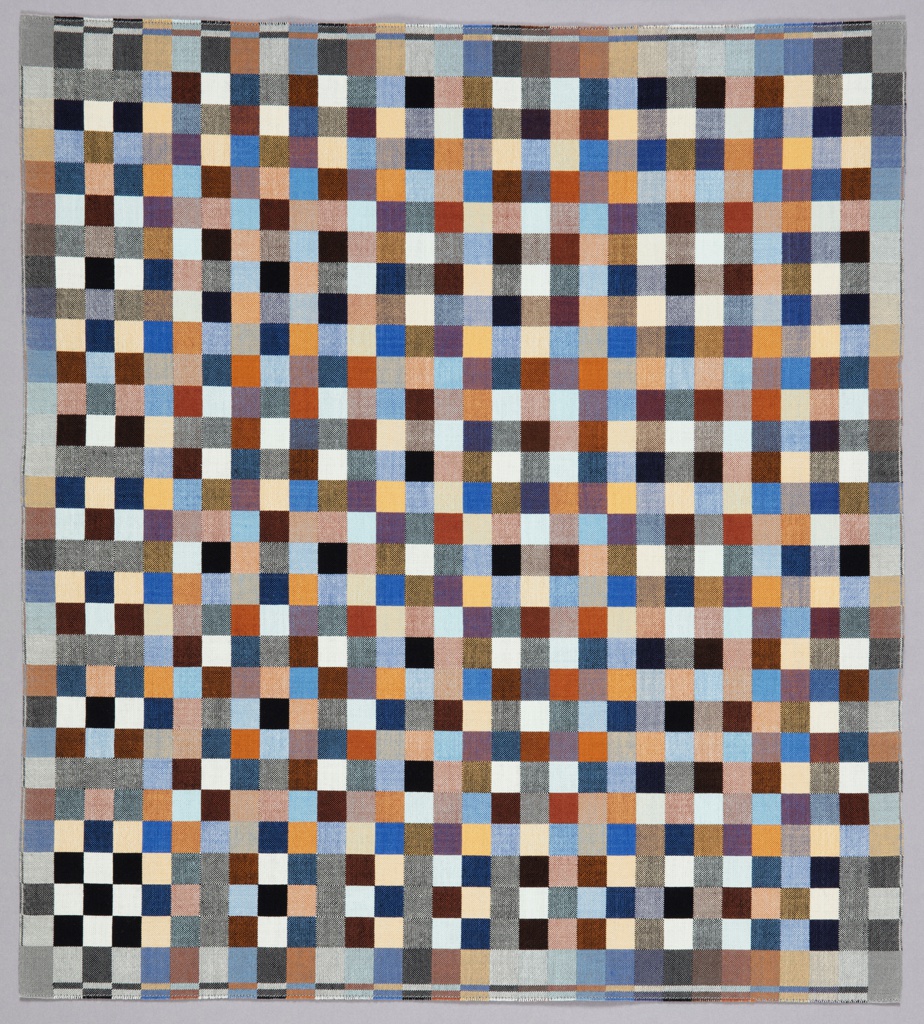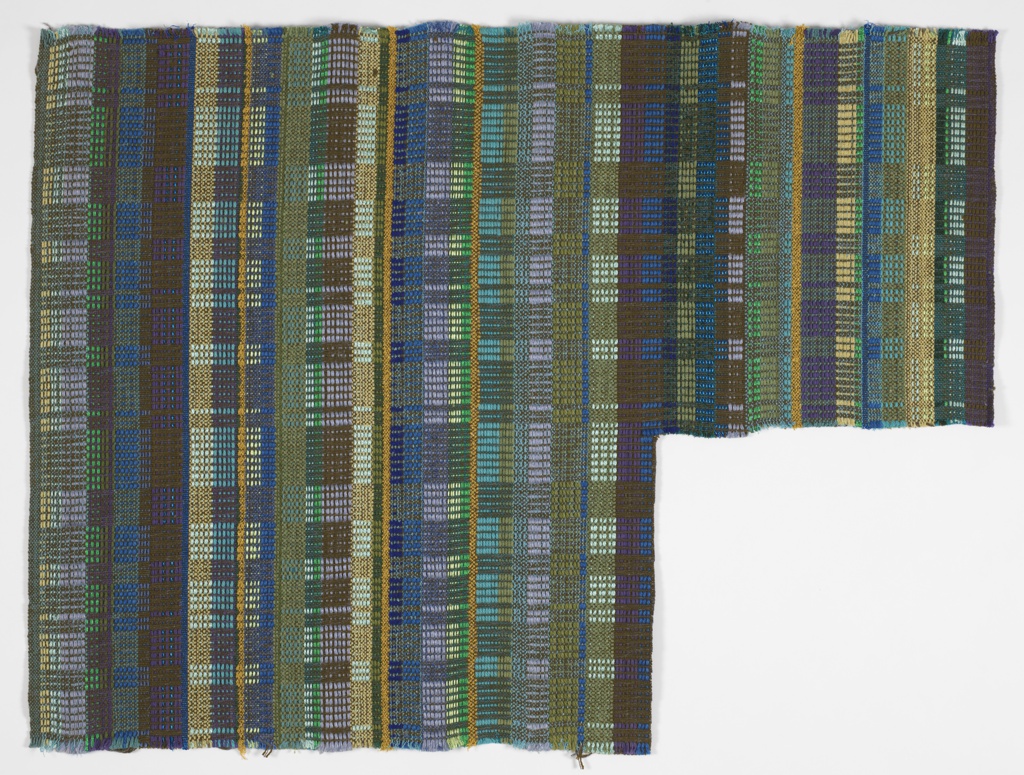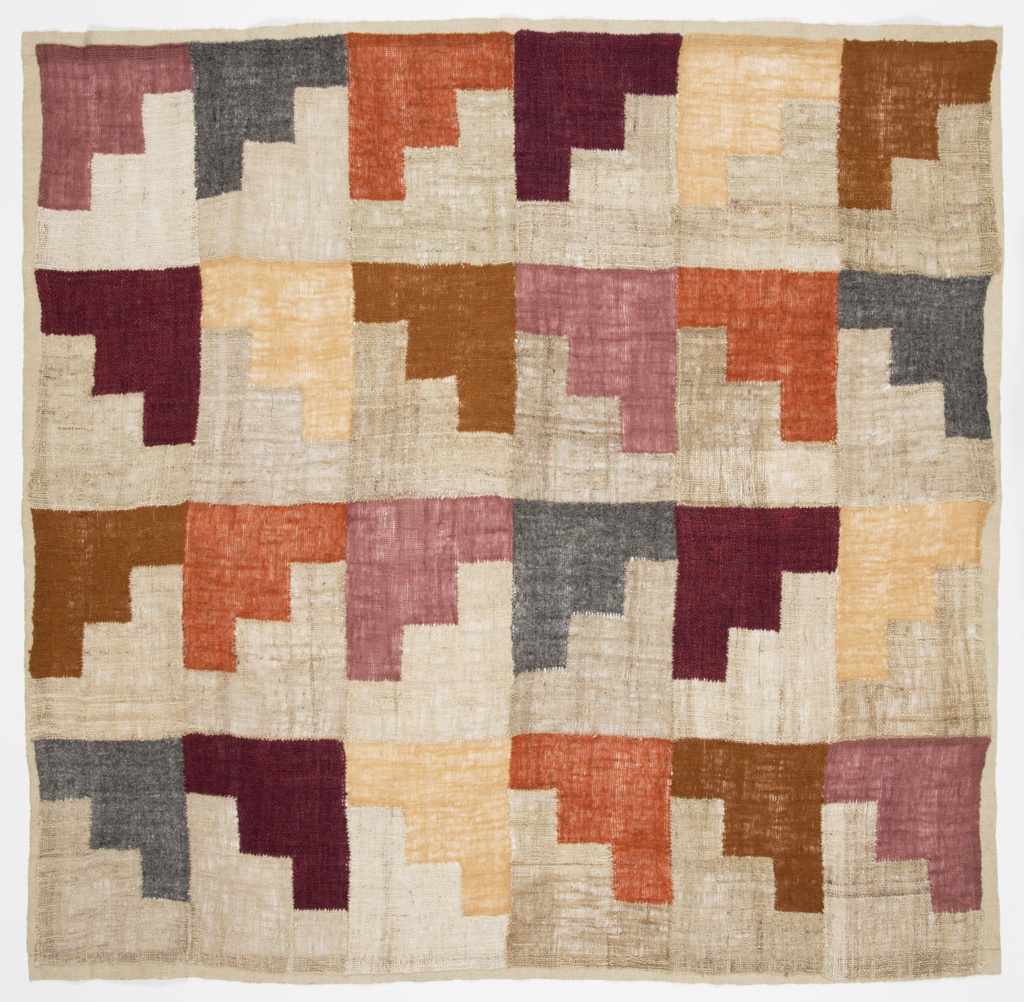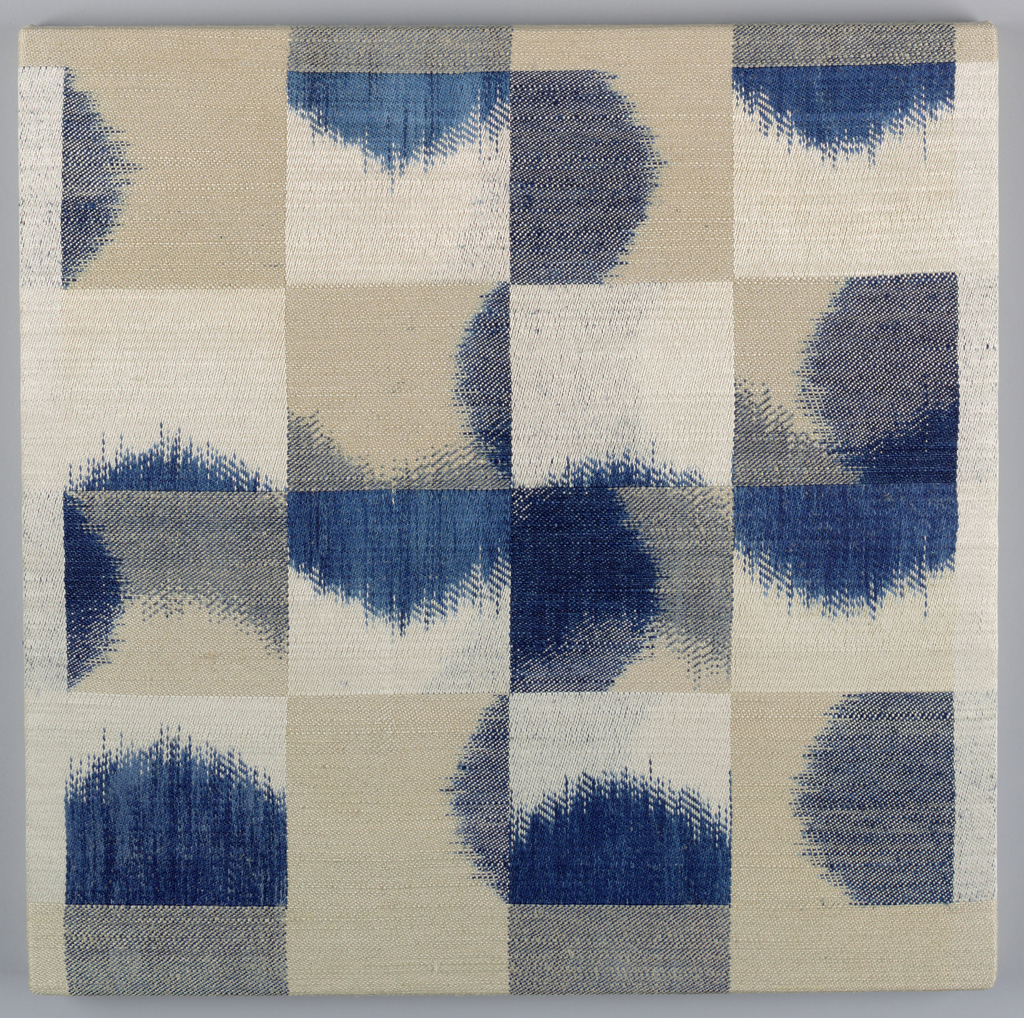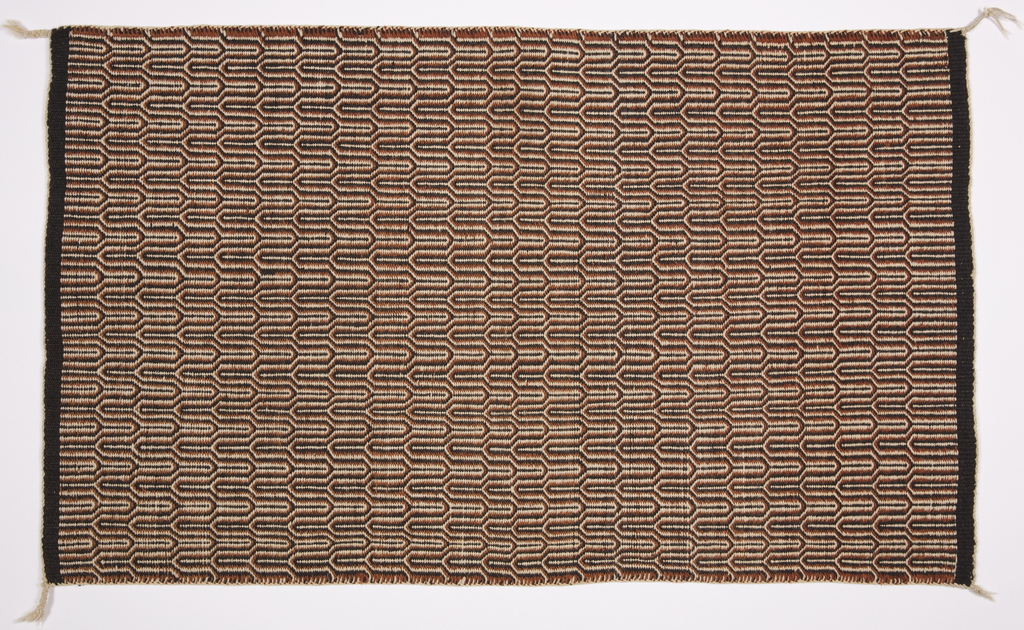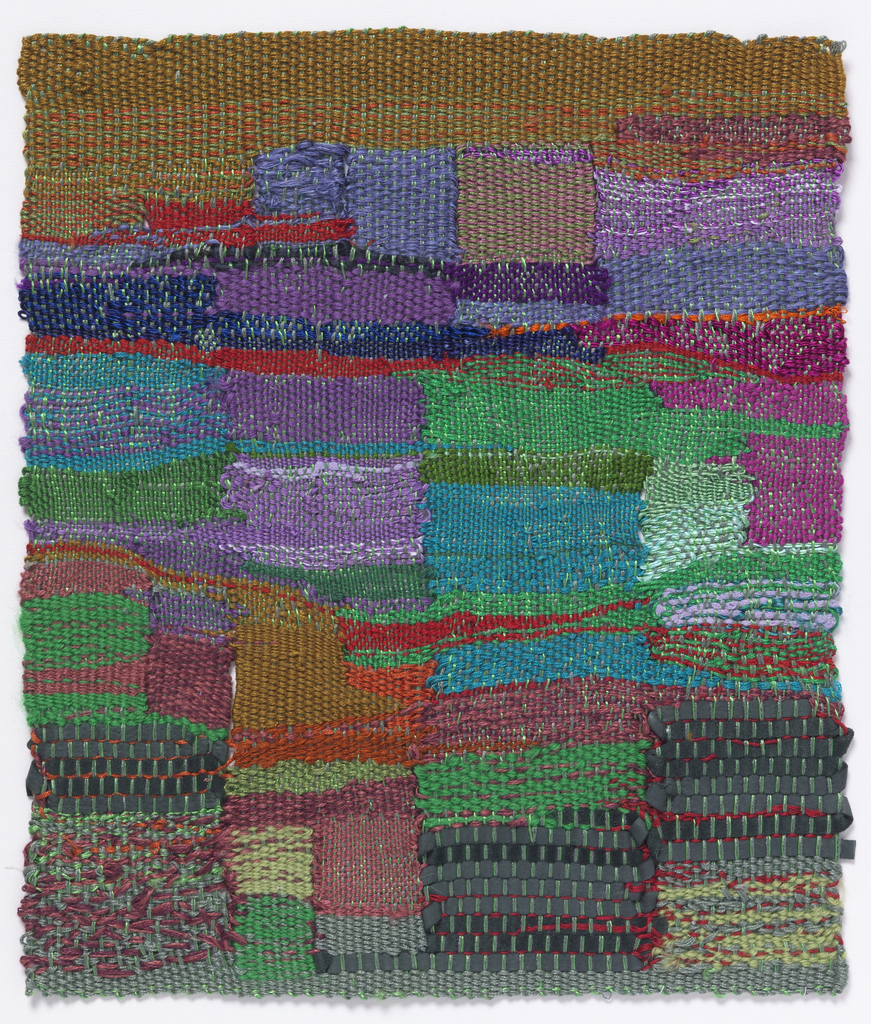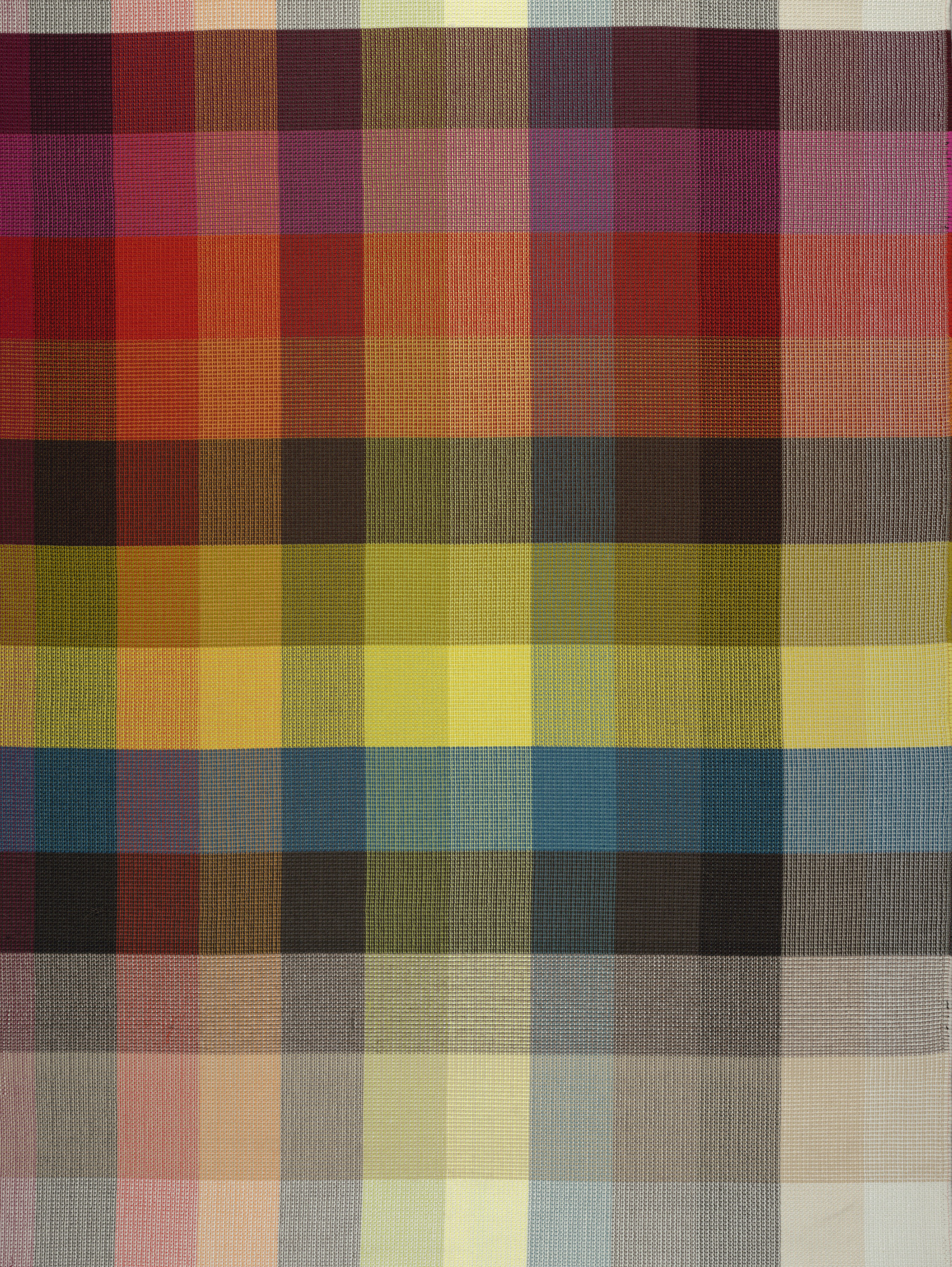American weaver Richard Landis’s works are characterized by complex design systems that echo the logic of their construction with a limited vocabulary of materials, texture, geometric forms, and colors. From his earliest days at the loom, Landis decided he would work only in plain weave and within the opportunities offered by handwoven, loom-controlled design. He...
Remoulade developed out of a hand-woven wall hanging Jack Lenor Larsen made during the summer of 1954 at Haystack Mountain School of Crafts in Maine, where he remains an Honorary Chair. The original hanging, a weft-faced weave, used over seventy different yarns, including cotton, silk, wool, jute, and Lurex, inserted randomly, to create a richly...
Author: Elena Phipps In celebration of the third annual New York Textile Month, members of the Textile Society of America will author Object of the Day for the month of September. A non-profit professional organization of scholars, educators, and artists in the field of textiles, TSA provides an international forum for the exchange and dissemination...
In celebration of Women’s History Month, March Object of the Day posts highlight women designers in the collection. Today’s blog post was written by Lucy Commoner and originally published February 17, 2013. Ethel Stein died this month at 100. Cooper Hewitt, Smithsonian Design Museum is fortunate to have in its collection three textiles designed and...
Saddle blankets — placed under the saddle to protect the horse from chafing and pressure from the saddle — continued to be used by the Navajo long after handwoven garments became impractical. By the 1950s, when this blanket was woven, the dramatic shoulder blankets for which the Navajo are famous were made far more frequently...
Author: Patricia Malarcher September is New York Textile Month! In celebration, members of the Textile Society of America will author Object of the Day for the month. A non-profit professional organization of scholars, educators, and artists in the field of textiles, TSA provides an international forum for the exchange and dissemination of information about textiles...
Knoll introduced Cato in 1961 and it has been in continuous production ever since, making it one of the most successful designs the company ever produced. It was designed and woven by Paul Maute, a German designer/weaver whose contributions to Knoll Textiles were both influential and lasting. In 1927, Maute established his weaving workshop in...
